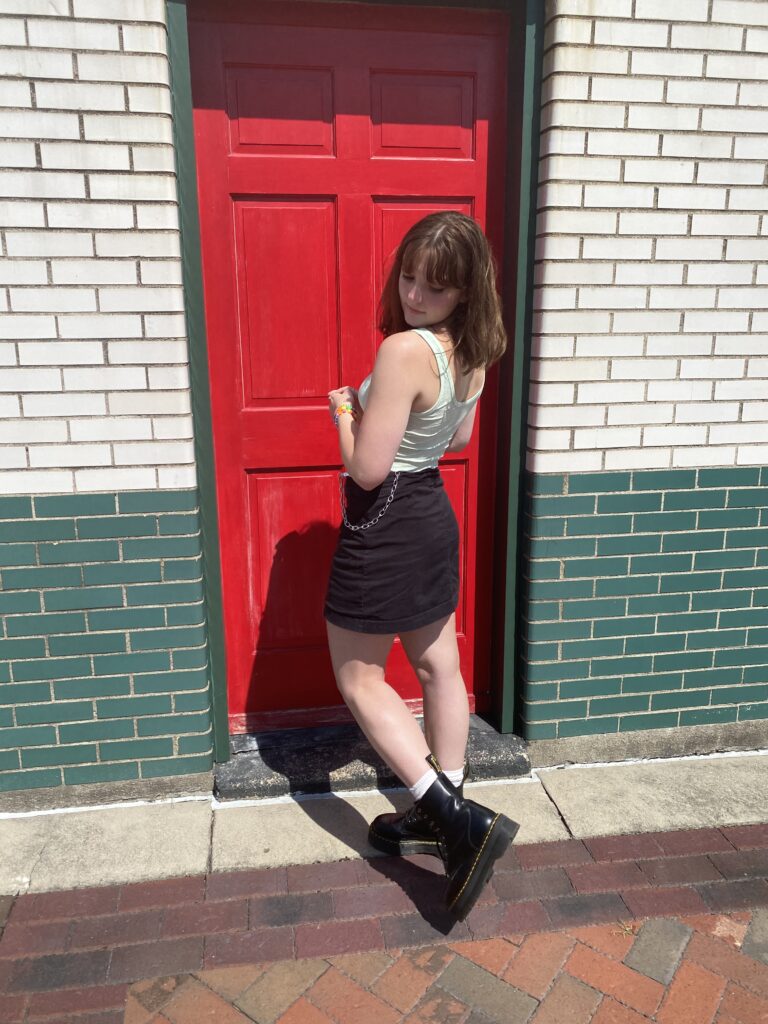The Rise of Alternative Fashion
Meghan Dincler | Online Editor

Internet culture has seen many trends come and go, and many teenagers today are expressing themselves through a rising form of fashion: alternative.
As trends have changed, many styles of alternative fashion have become more prominent. Often, alternative fashion means dark makeup, fishnets, and piercings, but in its most broad definition, it is fashion that diverges from styles considered normal and evolves into styles seen as creative and new. The rise in popularity of this style is often attributed to the idea that if people wear clothes that make them feel confident and comfortable, they will be happier and more in touch with themselves.
For Senior Raven McGinnis, alternative fashion is one of her strongest forms of self-expression. She has been curating her unique style since eighth grade, and firmly believes that clothes have had a drastic effect on the way she feels and carries herself.
“[My style] is kind of all over the place– sometimes it’s goth, sometimes it’s scene, and other times it’s just emo or alternative,” McGinnis said. “It helps me feel way more confident and comfortable, and helps me to express my attitude and how I feel internally.”
Senior Lydia Taylor said that having an alternative style has allowed her to not only feel more confident but to also express her love for fashion that she wasn’t fully comfortable showing off before. She enjoys taking inspiration from different subcategories of fashion and implementing a lot of different aesthetics to help her to find pieces that she likes.
“I used to be really self-conscious about what other people thought of me and I didn’t want to stand out in a negative way,” Taylor said. “In middle school and freshman year, I loved fashion but never felt like I could show it off in public because of that fear I had of criticism. I truly think it was finding people who helped me come out of my shell and express myself that has me not caring so much what others think of me.”
Sometimes, deviation from society’s definition of “normal” may invite ridicule or unwanted attention. McGinnis admitted to sometimes feeling like she stuck out or that people were being judgemental – even inadvertently – towards her form of self-expression.
“A lot of the time in school I get looked at and glared at,” McGinnis said. “[I even] occasionally get whispered about.”
While Taylor has never directly had similar experiences at the school, she has observed situations where students were criticized for their alternative fashion choices. Even though she said she’s never been comfortable pushing the boundaries a ton in school, hearing other students be mocked was something that she remembers vividly.
“I have seen people at school who express themselves through their clothing, hair, and makeup get criticized by our peers and it’s super disheartening,” Taylor said. “I’ve never gone all out at school, but those people who do fully express themselves and showcase who they are genuinely so inspiring.”
Through both the internet and in person, alternative fashion is helping people to unabashedly embrace themselves and express who they are, and to not worry about the opinions of those around them. Taylor uses her fashion and view on the style to be a positive light for those around her.
“I feel like now I’m more comfortable with making friends and striking up conversations,” Taylor said. “It has also in a way made me more accepting and loving towards others. Now, when I see someone who is being themselves wholeheartedly I feel inclined to tell them that I love their outfit or to make sure they know that I’m inspired by their honesty and openness.”
Photo provided by Lydia Taylor
